Top 10 Most Mysterious Landmarks in the World
No matter how much studying goes into these landmarks, there is still mystery surrounding them. Why were they built? What purpose did they serve? How much time has passed since their constructions?With history comes mystery, and there’s still a lot that will likely remain unanswered forever about these landmarks. That is, unless someone can travel back in time to see it all. But for now, we can only look in awe at these pieces of history, and wonder to ourselves the significance of them all.
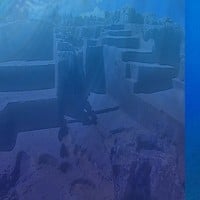
This is an underwater rock formation in Japan, consisting of several platforms and pillars. There is also a triangular formation some call the "turtle". Not much else is known about this monument, especially considering it's managed to survive such rough waters. There's a lot pointing to how it could be man-made, whilst also a lot that could prove it was natural formation. The question still remains, what purpose does it serve?
It's very interesting, it's weird that somebody would go to the trouble of going underground to make that. Maybe it was once above water and people made it then before the water rose.
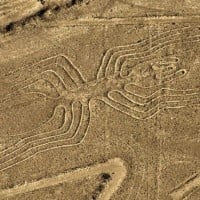
These are very large geoglyphs formed in the soil of the Nazca Desert. Some are said to be drawings of several different wild species, such as a monkey, llama, and lizard. Said to have been drawn out hundreds of years ago, these drawings have remained untouched for so long. The purpose and origins of these lines remain questioned, with some even theorizing that aliens drew them, considering some of the animals in question weren't native to Peru.
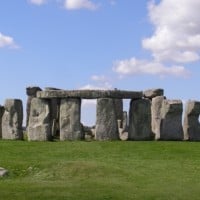
These monuments are thousands of years old, and are said to have taken over a millennium to complete. Although it's agreed that the Stonehenge was a burial ground, what remains unknown is how prehistoric humans could've erected such large stones. What's even more confusing is the inner ring, which is made of bluestone that can only be found hundred of miles away form it's location. The origins are even more questionable, with many stories spanning over centuries having been told.
Legendary, a lot of people say it was Pict ruins made my Romans. I don't know if I buy that that though.
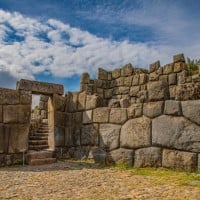
This ancient monument goes by various spellings of the name, but regardless which one you choose, the collection of walls outside of Cuzco has much to be questioned about. It's said that the Incas were masters of rock structures, and the fact they could lug heavy stones into perfectly fit places is astounding. Several walls can be found, and it's said they were used for defense as a barrier. Another theory states the walls were for symbolic purposes native to the Incas.
Sacsayhuamán is an assembly of walls built with large blocks of rock speculated to have been used as some sort of barrier. Materials used were as plain as rock and limestone while each block weighs no less than 120 tons. However, some of the biggest blocks are estimated at anywhere from 200 -320 tons in weight. Scientists are baffled by how these blocks were transported in the first place, along with the construction of the walls themselves. It is still a Mystery to this day how these blocks were moved from them to use to make this some sort of wall.
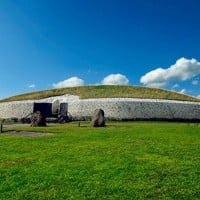
Newgrange is a tomb said to have been built thousands of years ago. Inside are stone basins with cremated remains, and outside is a sturdy design that's completely waterproof. Something interesting to note is that the design of the tomb gives way for a light passage on the winter solstice, a feat which baffles many who've studied it. Who it was for and why it was so important? We'll never know.
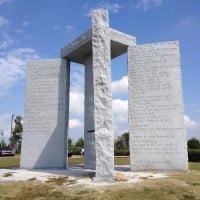
This monument is actually the youngest on the list, being built around 1980 AD, and yet still holds great mystery behind its purpose and origins. A man under the pseudonym of R.C. Christian commissioned the construction, although nothing else about the man or his organization is known. The stones are in the different languages and offer as "guides" to world peace. For all its strangeness, some theorized that the Guidestones were in response to the ongoing Cold War, guiding the way to a new world under the threat of a nuclear holocaust.
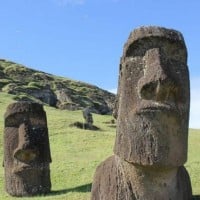
The Moai are a series of human statues constructed between 1250 and 1500 AD, believed to depict deities of the inhabitants. They were carved from a volcanic rock, and hundreds were destroyed during battle. These statues weigh several tons, so how they were able to be carved and transported is still a mystery.

Made of earth, gravel, and wood, the Goseck Circle is said to be a prehistoric solar observatory. Consisting of several circular ditches and three openings pointing in different directions, this circle's true purpose is still up for debate. Whether a solar observatory, a sacrificial ground, or another place of ritual, this circle will always be a mystery.
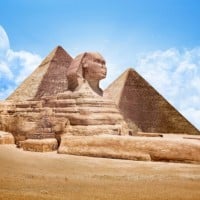
Sphinxes. Massive stones statues embodying lions with humans heads. The most prominent is found in Egypt, and is said to be a symbolic guardian to the ancient Egyptians. It neighbors the pharaoh Khafra, which may suggest its age to be thousands of years old. However, water erosion may suggest it came even earlier, Not much else points to the who, when, why, and how of it all.
We don't know how were built. Some people say it's aliens, but we don't know for sure. Also, in the ancient time, it was almost impossible to build giant sculptures like this.
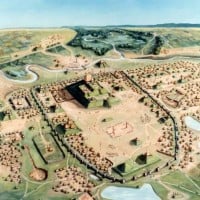
Estimated to have been founded around 650 AD, this would make it one of the younger constructions mentioned on this list. The network of grounds and landscaping show it was once thriving, and was likely home to tens of thousands. That in of itself made Cahokia the most populous American civilization before the colonists came. So much is found from these ruins over time, and it is wondered why the settlers would leave such a thriving place, or where their descendants are now.
This the most youngest on the list, only made in 1816. it is a grave stone of unknown Woman and it is in St Paul's Cemetery in Alexandria, Virginia. It is still a mystery to this day.